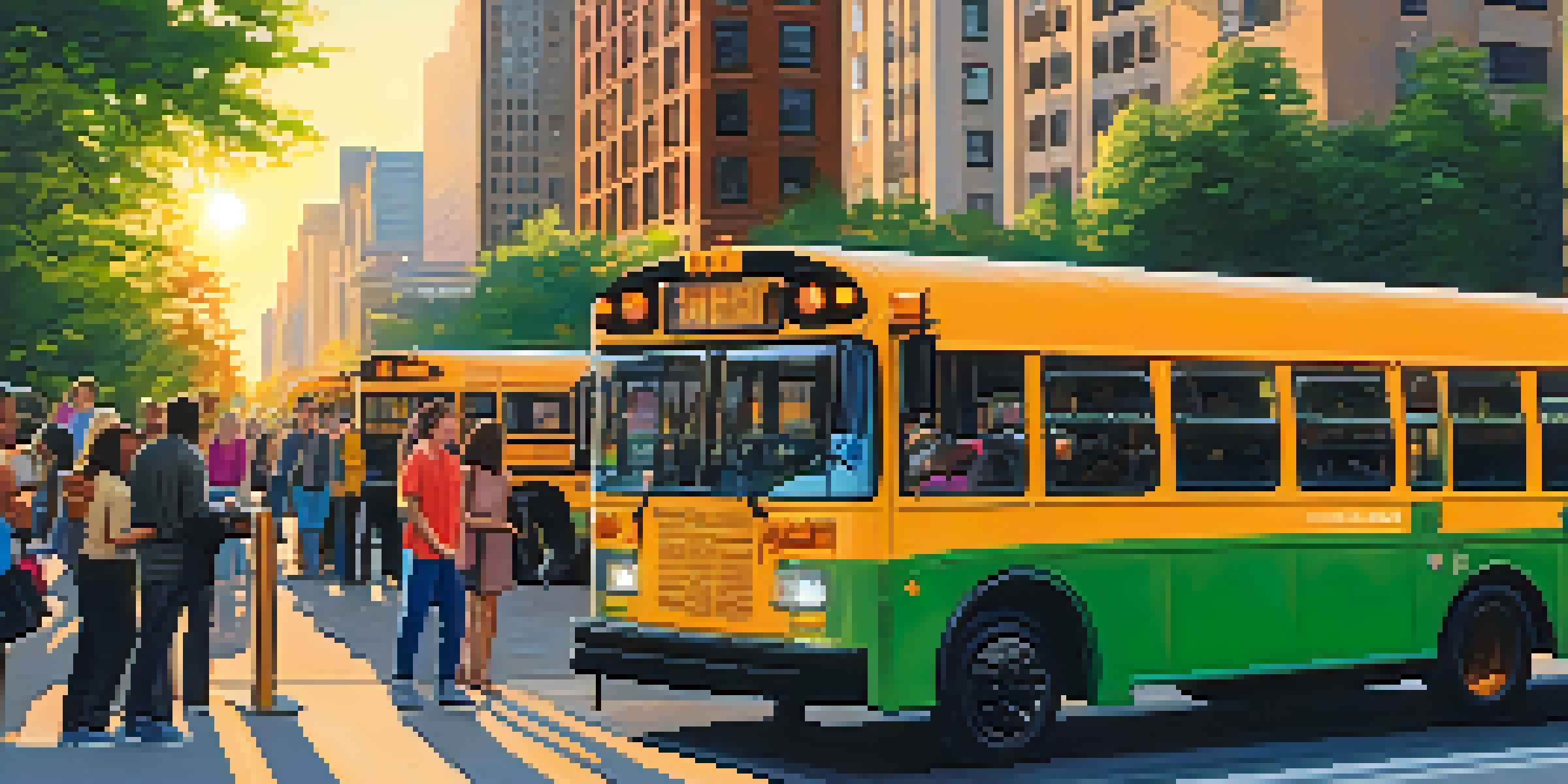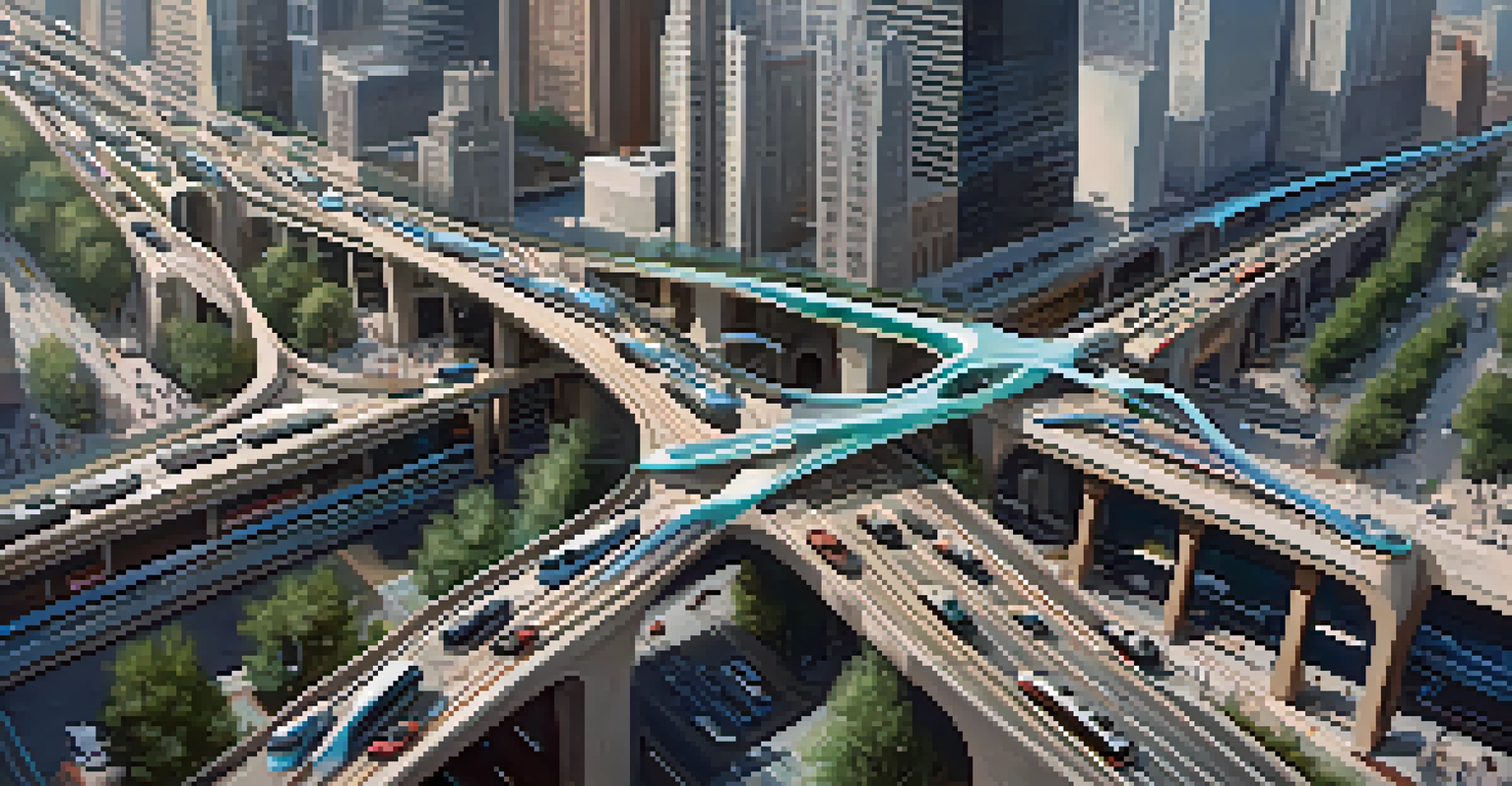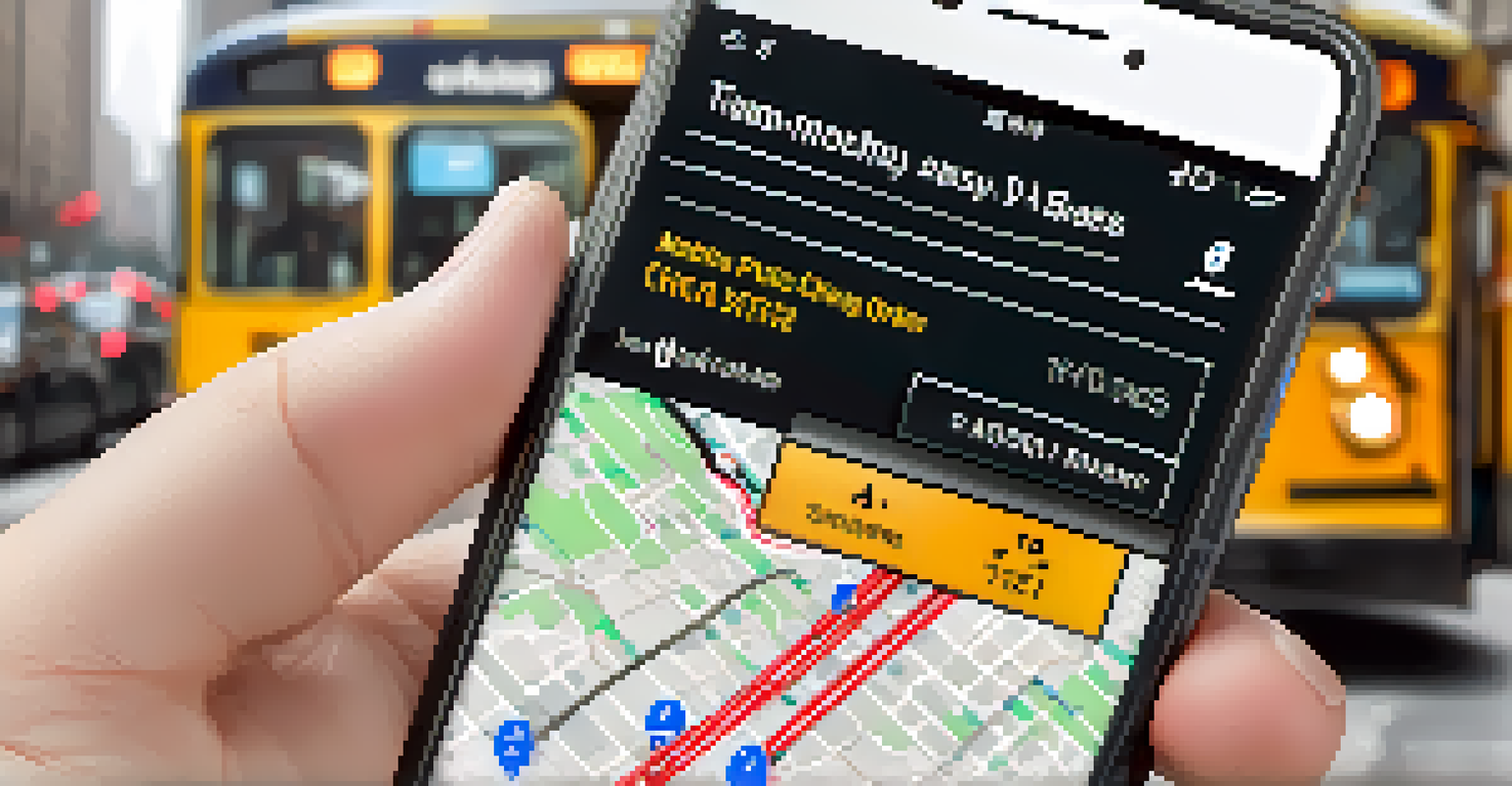The Future of Transportation: Innovations in Chicago Transit

Exploring Chicago's Transit Landscape Today
Chicago's public transportation system is a vibrant tapestry of buses, trains, and emerging technologies. The city's extensive network connects millions of residents and visitors, making it a vital component of daily life. Yet, as population growth and urban challenges increase, there’s a pressing need for innovation to enhance efficiency and accessibility.
Public transportation is the backbone of any city, and Chicago's commitment to innovation is transforming the way we connect and commute.
In recent years, Chicago has seen significant advancements in transit technology, from real-time tracking apps to electric buses. These improvements are not just about convenience; they aim to create a more sustainable and user-friendly transit experience. For instance, the introduction of mobile payment options has made commuting easier and more seamless.
Looking ahead, the integration of smart technologies promises to revolutionize how we navigate the city. As we delve deeper into the future of transportation, it becomes clear that the Windy City is on the brink of a transformative journey.
Electric Buses: A Greener Alternative
One of the most exciting innovations in Chicago's transit system is the adoption of electric buses. These vehicles not only reduce greenhouse gas emissions but also provide a quieter, smoother ride for passengers. The city's commitment to sustainability is evident as it gradually phases out older diesel buses in favor of these eco-friendly alternatives.

Electric buses also offer cost savings over time, with lower maintenance and fuel costs compared to traditional buses. Cities like Chicago are recognizing that investing in green technology not only benefits the environment but also enhances the quality of life for residents. This transition signals a broader shift towards environmentally responsible public transportation.
Autonomous Vehicles on the Horizon
Chicago is piloting autonomous shuttles to enhance public transit flexibility and safety.
As more electric buses hit the streets, we can expect significant changes in air quality and urban noise levels. This shift aligns with global trends towards cleaner transit solutions, positioning Chicago as a leader in sustainable urban transportation.
The Rise of Autonomous Vehicles in Transit
Imagine a city where self-driving shuttles navigate busy streets, picking up passengers without the need for a human driver. Chicago is exploring this futuristic concept through pilot programs that test autonomous vehicles in designated areas. This innovation could reshape public transit by providing a flexible, on-demand service that caters to varying commuter needs.
We cannot build a sustainable future without investing in our public transit infrastructure and engaging the community in the process.
The potential benefits of autonomous vehicles extend beyond convenience; they promise to enhance safety as well. With advanced sensors and AI technology, these vehicles can react to their environment faster than a human driver. This could lead to a significant reduction in traffic accidents, making city streets safer for everyone.
As the technology matures, it will be crucial for city planners to consider how to integrate autonomous vehicles into the existing transit framework. The collaboration between traditional transit services and innovative technologies could pave the way for a more efficient and accessible transportation system.
Enhanced Connectivity with Mobility-as-a-Service
Mobility-as-a-Service (MaaS) is a game-changer in urban transportation, providing seamless access to various modes of transport through a single platform. In Chicago, this concept is gaining traction, allowing users to plan, book, and pay for their journeys using a smartphone app. This integration makes it easier for commuters to navigate the city's extensive transit options.
MaaS promotes a holistic approach to transportation, encouraging the use of public transit, rideshares, and bike-sharing services. By streamlining the user experience, it aims to reduce reliance on personal vehicles, helping alleviate traffic congestion and decrease emissions. This shift could lead to a more sustainable urban environment.
Chicago Embraces Electric Buses
The city is transitioning to electric buses, which help reduce emissions and improve passenger experience.
As MaaS continues to evolve, it will be important for city officials to ensure that all residents can benefit from this technology. Accessibility and affordability will be key factors in making sure that everyone, regardless of their background, can enjoy the advantages of a connected transit system.
Smart Infrastructure: The Backbone of Future Transit
At the heart of Chicago's transit innovations lies smart infrastructure, which includes traffic management systems, intelligent traffic signals, and connected signage. These technologies collect and analyze data to optimize traffic flow and enhance the overall commuting experience. By leveraging this information, transit authorities can make real-time adjustments to improve service reliability.
Moreover, smart infrastructure facilitates better coordination between different modes of transportation. For example, synchronized traffic lights can prioritize buses, reducing delays and making public transit a more attractive option. This interconnected approach represents a significant leap toward creating a more efficient urban mobility ecosystem.
As Chicago invests in smart infrastructure, the potential for improved safety and reduced congestion becomes increasingly evident. The integration of technology into the city’s transit framework not only supports current needs but also lays the foundation for future innovations.
Data-Driven Decisions in Transit Planning
Data has become a crucial asset in shaping the future of transportation in Chicago. By analyzing commuter patterns and preferences, transit authorities can make informed decisions about service improvements and route planning. This data-driven approach enables the city to respond to the evolving needs of its residents effectively.
For instance, during peak hours, data can identify overcrowded routes, prompting adjustments to service frequency. This flexibility allows the transit system to adapt in real-time, ensuring that commuters have reliable options. Additionally, feedback from riders can be integrated into future planning, creating a more user-centered transit experience.
Community Engagement Drives Innovation
Involving residents in transit planning ensures that solutions reflect their needs and foster trust.
As technology continues to advance, the ability to harness big data will only grow. Utilizing data analytics can lead to smarter investments and enhanced services, ultimately transforming the way Chicagoans travel across the city.
Community Engagement: Shaping Transit Solutions Together
Engaging the community is essential to the success of any transit innovation. Chicago has recognized the importance of involving residents in the decision-making process, ensuring that new initiatives reflect their needs and preferences. Public forums, surveys, and feedback sessions are becoming integral to the planning stages of transit projects.
This collaborative approach not only fosters a sense of ownership among residents but also leads to more effective and sustainable solutions. By listening to the voices of the community, transit authorities can identify gaps in service and areas for improvement. This transparency builds trust and encourages more people to use public transportation.

As Chicago continues to innovate, the emphasis on community engagement will play a pivotal role in shaping a transit system that serves everyone. By working together, residents and officials can create a transportation network that is not only efficient but also inclusive.
The Road Ahead: Chicago's Transit Vision for 2030
Looking towards 2030, Chicago's transit vision is ambitious yet achievable. The city aims to create a comprehensive, multimodal transportation system that prioritizes sustainability, accessibility, and innovation. This vision encompasses everything from expanding electric bus fleets to integrating autonomous vehicles into the daily commute.
Furthermore, enhancing public transit infrastructure and promoting the use of alternative transportation methods, such as biking and walking, will be key components of this future. Chicago's commitment to reducing carbon emissions and improving air quality will guide these initiatives, making the city a leader in urban sustainability.
As Chicago embarks on this journey, the collaboration between public agencies, private companies, and local communities will be crucial. Together, they can build a future-proof transit system that not only meets the demands of today but also anticipates the needs of generations to come.